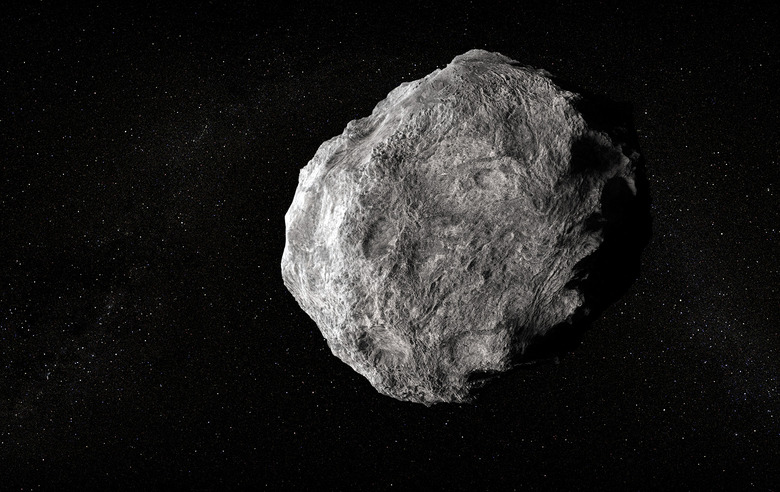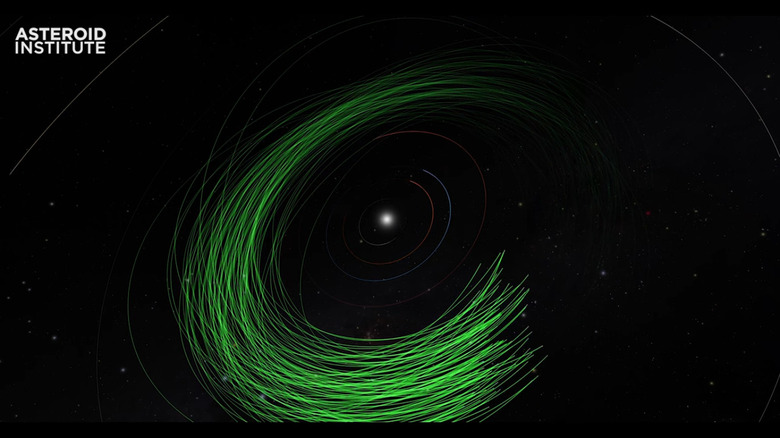A New Tool Could Help Us Find Killer Asteroids Hiding In Plain Sight
A former NASA astronaut has come up with a plan to save the Earth from killer asteroids. Dr. Ed Lu, who has a doctorate in applied physics, is trying to find a way to discover dangerous asteroids with enough advanced warning to deflect them away from Earth. It's a noble effort and one that could work together with other asteroid detection and deflection systems, like NASA's D.A.R.T spacecraft.
An algorithm could make finding killer asteroids easier
On Tuesday, the B612 Foundation announced the discovery of around 104 asteroids, some possibly killer asteroids. B612 is a nonprofit group that Dr. Lu helped found. It's named after the home asteroid of the main character in Antoine de Saint-Exupéry's children's book The Little Prince (via The New York Times).
Of course, finding new asteroids isn't really that exciting anymore. After all, we're constantly reporting on massive asteroids that pass close to the Earth, many within several million miles. Despite all the asteroids we know about, though, the B612 Foundation has found over 100 more. Further, they found these new asteroids hiding in plain sight. As such, the tool could be used to make finding killer asteroids easier.
The tool doesn't rely on a new telescope or even new observations. Instead, it looked at older images stored in the digital archives at the National Optical-Infrared Astronomy Research Laboratory (NOIRLAB). Then, the researchers let the algorithm get to work searching 412,000 different images. The goal was to sift out possible killer asteroids from over 68 billion dots of cosmic light showcased in the images.
Additionally, it is important to note that when we say killer asteroid, we simply mean that they are asteroids capable of killing thousands, if not millions, were they to impact the Earth. It does not necessarily mean that they are on a collision course for our planet.
Space needle in a haystack
And it seems that the B612 Foundation succeeded. Though, these discoveries aren't necessarily killer asteroids that we need to worry about. However, it is a notable discovery because astronomers estimate there are at least 25,000 near-Earth asteroids at least 460 feet in diameter floating around in space.
Of course, of that 25,000, only around 40 percent have been discovered. That leaves around 15,000 asteroids, some with the possibility of being killer asteroids, swirling through space, unknown. But with B612's algorithm, NASA and other space agencies could discover asteroids based on older images.
There's still the possibility of needing to verify the information discovered. But it could make the search easier. And, if any killer asteroids with a path set towards Earth are discovered, NASA and other space agencies will have more time to defend against them.
NASA is testing its D.A.R.T spacecraft this year, which will try to change an asteroid's course. And China wants to make a similar defensive measure, as well as an asteroid monitoring system. With an expanded option that makes finding these asteroids easier, humanity could have a fighting chance against any killer asteroids we find hurtling towards Earth.

